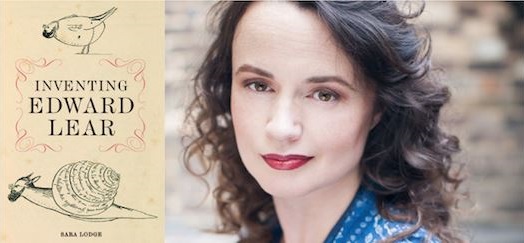Edward Lear’s songs of the century
The music of literary maverick Edward Lear will be brought to life for the first time in almost 100 years, thanks to an academic at the University of St Andrews.
Edward Lear (1812 to 1888) is best known as a nonsense poet and author of The Owl and the Pussy-cat and The Jumblies. However, he was also a gifted and prolific painter, who taught Queen Victoria to draw; a naturalist, whose detailed illustrations of new species were consulted by Charles Darwin; and a composer, who published 12 settings of his friend Alfred, Lord Tennyson’s poems.
Dr Sara Lodge, from the University of St Andrews School of English, undertook an innovative project to record all the music that Lear wrote or re-worded, many of the songs that he sang in public, and musical settings of his nonsense poems that he knew and approved of in his lifetime. The project marks the first time that all of Lear’s works have been recorded. Many have not been heard for over 100 years.
 Sara’s ground-breaking work on Lear’s music has also uncovered surprising new attributions and musical sources for well-known nonsense poems, such as The Jumblies, whose chorus closely echoes Lear’s setting, Sweet and Low, of a lullaby by Alfred, Lord Tennyson.
Sara’s ground-breaking work on Lear’s music has also uncovered surprising new attributions and musical sources for well-known nonsense poems, such as The Jumblies, whose chorus closely echoes Lear’s setting, Sweet and Low, of a lullaby by Alfred, Lord Tennyson.
A series of six concerts of Lear’s words and music will take place around the UK, where Sara will be performing alongside acclaimed pianist, David Owen Norris, and operatic tenor, Mark Wilde. The concert series begins in Scotland, at the Society of Musicians in Edinburgh (Saturday 9 March) and as part of StAnza, Scotland’s international poetry festival, in St Andrews (Sunday 10 March).
“Lear’s music deserves to be much better known,” Sara commented. “His beautiful setting of Tennyson’s Tears, Idle Tears is very moving. It compares very well with settings of the same poem by Arthur Sullivan and Ralph Vaughan Williams. It’s also true that most of Lear’s nonsense poems are actually songs, which Lear would have sung to music he improvised at the piano. Sadly, of his nonsense repertoire, we only have his music for The Pelican Chorus and The Courtship of the Yonghy-Bonghy-Bo, but we know that he sang The Owl and the Pussy-cat to his friends and many of his other works. He invented musical characters like The Dong with a Luminous Nose and even musical-sounding plants like the Bong-tree and Stunnia Dinnerbellia. He was steeped in the musical culture of his time, going to hear Paganini play and new operas by Bellini as a young man, performing comic numbers by Jacob Beuler, and later in life meeting Jenny Lind and hearing her sing. All of that music had a profound impact on his writing.”
Lear visited Scotland in 1841. Many of his limerick characters hail from Scottish destinations, for example, the ‘Young Person of Ayr/Whose head was remarkably square’; the ‘Old Person of Skye/who waltz’d with a Bluebottle fly’; and the ‘Old Person of Fife/who was greatly disgusted with life’.
The National Gallery of Scotland in Edinburgh holds one of the richest collections of Lear’s work, with a cache of 37 watercolours alongside significant letters and manuscripts in both the National Library and National Museum of Scotland. “We ought to celebrate our connections with Lear,” said Sara, “he was a Victorian polymath who excelled in so many areas, but always remained approachable, rueful, and very funny.”
Sara’s new book, Inventing Edward Lear, presents the fullest account yet of Lear’s passionate engagement in the intellectual, social and cultural life of his times. Lear had a difficult start in life. He was epileptic, asthmatic and depressive, but even as a child a consummate performer who projected himself into others’ affections. He became, by John James Audubon’s estimate, one of the greatest ornithological artists of the age. Queen Victoria, an admirer, chose him to be her painting teacher. He popularised the limerick, set Tennyson’s verse to music, and opened fresh doors for children and adults to share fantasies of magical escape.
In the new book, Sara draws on diaries, letters and new archival sources to paint a vivid picture of Lear that explores his musical influences, his religious nonconformity, his relationship with the Pre-Raphaelite movement and the connections between his scientific and artistic work. He invented himself as a character, awkward but funny, absurdly sympathetic. In doing so, Lear emerges as a dynamic and irreverent polymath whose conversation continues to draw us in. Inventing Edward Lear is an original and moving account of one of the most intriguing and creative of all Victorians.
Dr Lodge’s work on Edward Lear has been funded by the Carnegie Trust, the Russell Trust, the Leverhulme Foundation and the Royal Society of Edinburgh.
Further details of the concert series and examples of the music are available on the Edward Lear's Music website.
Issued by the University of St Andrews Communications Office.